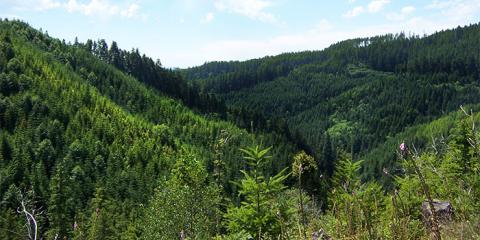Public trust in forest management key to sector’s future
January 02, 2014
Because the processes and outcomes of timber harvest are apparent to all, it’s up to the forest sector to tell its story to a skeptical public mistrustful of forest management activities.
Up and down the West Coast, forest sector organizations are doing all they can to inform the public about forest management. Whether it’s the Washington Forest Protection Association, the Idaho Forest Products Commission, the California Forestry Association, or the Oregon Forest Resources Institute, all are working toward a common goal of creating a positive public-opinion environment in which to conduct active, sustainable forest management.
Social license
A century ago, most of the U.S. populace was connected to the land. But today the public lacks a strong link to natural resource management. Milk comes from Safeway. Hamburger comes from McDonald’s. Wood comes from The Home Depot. There’s little connection to the farms, ranches and forests that supply society’s daily needs, and little understanding of the cost to bring these products to market.
Because of this missing connection, people who either misunderstand or disagree with contemporary natural resource management can complain to their elected officials that “something needs to be done.” Forward-thinking natural resource companies understand this reality. Like quasi-public agencies such as electric, water and gas utilities, they know that the public gives them a “social license” to operate. And like any license, it can be revoked.
Not your grandfather’s forestry
For those in the forest sector, the future of its social license is dependent on continued public trust in forest management. Many folks’ perceptions of forest management are based on old stereotypes. Gone are the days of thousand-acre clearcuts, harvesting to the edge of a riverbank or dragging logs through streams. The West Coast states have some of the strictest forest practice laws and regulations in the United States – and with good reason. The region is famous for its water quality, fish habitat and recreational potential. All these must be protected and managed in balance with timber production.
In western Oregon, for example, clearcutting is often used in Douglas-fir forests because new seedlings depend on direct sunlight to grow quickly. However, clearcuts are limited in size to 120 acres, and adjacent units may not be clearcut until seedlings are well-established and considered free-to-grow – generally four to six years. Buffers of trees – called riparian areas – of various widths must be left along waterways, depending on the width of the river or stream. Most importantly, reforestation is required within two planting seasons after harvest.
As a result, 40 million to 50 million seedlings are planted every year in Oregon – about four trees for every one harvested.
Telling the story
The Oregon Forest Resources Institute is unique among the four West Coast states in that it is a state agency, established by the Oregon Legislature in 1991 for the express purpose of public and landowner education. OFRI is governed by a 13-member board and is funded by a dedicated forest products harvest tax.
Among OFRI’s educational activities are public education, landowner education and K-12 programs, including professional development for teachers and in-class programs for students. The agency has launched four new websites the past 18 months, including OregonForests.org for the general public, LearnForests.org for K-12 teachers, and KnowYourForest.org for forest landowners. In addition, OFRI runs a dedicated site, TheForestReport.org, that houses data from a comprehensive study of the sector’s economic impact, The 2012 Forest Report. OFRI is located in Portland, and has a staff of seven.
A former OFRI board member once said, “The one thing the public doesn’t understand is silence.” In today’s media-rich society, it is incumbent on the forest sector to explain how its practices are conforming to social and scientific standards. Good forest management practices, combined with effective public education, will help ensure the sector’s “social license” remains valid for years to come.
Paul Barnum
Barnum has served as executive director of the Oregon Forest Resources Institute since 2008.
